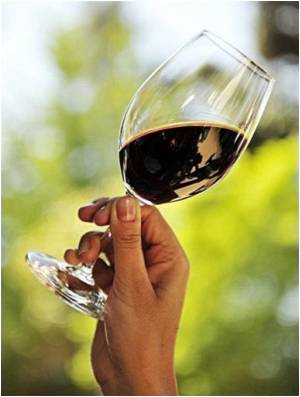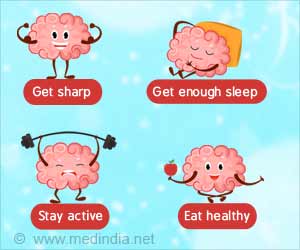Red wine compound resveratrol directly activates a protein that promotes health and longevity in animal models shows a demonstration by a new study. Researchers consider this to conclusive proof.

For the last decade, the science of aging has increasingly focused on sirtuins, a group of genes that are believed to protect many organisms, including mammals, against diseases of aging. Mounting evidence has demonstrated that resveratrol, a compound found in the skin of grapes as well as in peanuts and berries, increases the activity of a specific sirtuin,SIRT1, that protects the body from diseases by revving up the mitochondria, a kind of cellular battery that slowly runs down as we age. By recharging the batteries, SIRT1 can have profound effects on health.
Mice on resveratrol have twice the endurance and are relatively immune from effects of obesity and aging. In experiments with yeast, nematodes, bees, flies and mice, lifespan has been extended.
"In the history of pharmaceuticals, there has never been a drug that binds to a protein to make it run faster in the way that resveratrol activates SIRT1," said David Sinclair, Harvard Medical School professor of genetics and senior author on the paper. "Almost all drugs either slow or block them."
In 2006, Sinclair's group published a study showing that resveratrol could extend the lifespan of mice, and the company Sirtris Pharmaceuticals, which was started by HMS researchers, was founded to make drugs more potent than resveratrol. (Sinclair is a co-founder of Sirtris, a GlaxoSmithKline company, and remains a scientific advisor. Sirtris currently has a number of sirtuin-activating compounds in clinical trials.)
But while numerous studies, from Sinclair's lab and elsewhere, underscored a direct causal link between resveratrol and SIRT1, some scientists claimed the studies were flawed.
Advertisement
As a result, a debate erupted over the particular pathway that resveratrol and similar compounds affected. Does resveratrol directly activate SIRT1 or is the effect indirect? "We had six years of work telling us that this was most definitely not an artifact," said Sinclair. "Still, we needed to figure out precisely how resveratrol works. The answer was extremely elegant."
Advertisement
First, the team addressed the problem of the fluorescent chemical group. Why was it required for resveratrol to rev up SIRT1 in the test tube? Instead of dismissing the result as an artifact, the researchers surmised that the chemical might be mimicking molecules found naturally in the cell. These turned out to be a specific class of amino acid, the building blocks of proteins. In nature, there are three amino acids that resemble the fluorescent chemical group, one of which is tryptophan, a molecule abundant in turkey and notable for inducing drowsiness. When researchers repeated the experiment, swapping the fluorescing chemical group on the substrate with a tryptophan residue, resveratrol and similar molecules were once again able to activate SIRT1.
"We discovered a signature for activation that is in fact found in the cell and doesn't require these other synthetic groups," said Hubbard, first author of the study. "This was a critical result, which allowed us to bridge the gap between our biochemical and physiological findings."
"Next, we needed to identify precisely how resveratrol presses on SIRT1's accelerator," said Sinclair. The team tested approximately 2,000 mutants of the SIRT1 gene, eventually identifying one mutant that completely blocked resveratrol's effect. The particular mutation resulted in the substitution of a single amino acid residue, out of the 747 that make up SIRT1. The researchers also tested hundreds of other molecules from the Sirtris library, many of which are far more powerful than resveratrol, against this mutant SIRT1. All failed to activate it.
The authors propose a model for how resveratrol works: When the molecule binds, a hinge flips, and SIRT1 becomes hyperactive.
Although these experiments occurred in a test tube, once the researchers identified the precise location of the accelerator pedal on SIRT1—and how to break it—they could test their ideas in a cell. They replaced the normal SIRT1 gene in muscle and skin cells with the accelerator-dead mutant. Now they could test precisely whether resveratrol and the drugs in development work by tweaking SIRT1 (in which case they would not work) or one of the thousands of other proteins in a cell (in which they would work). While resveratrol and the drugs tested revved up mitochondria in normal cells (an effect caused activating by SIRT1), the mutant cells were completely immune.
"This was the killer experiment," said Sinclair. "There is no rational alternative explanation other than resveratrol directly activates SIRT1 in cells. Now that we know the exact location on SIRT1 where and how resveratrol works, we can engineer even better molecules that more precisely and effectively trigger the effects of resveratrol."
Source-Eurekalert












